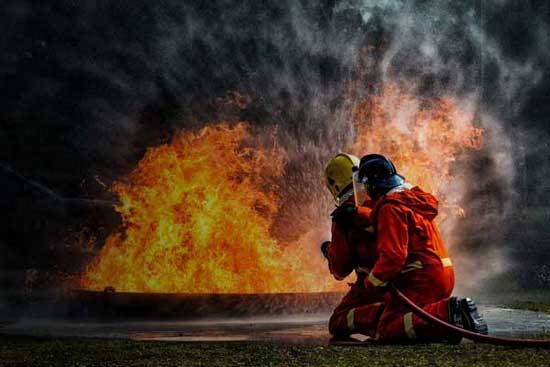 |
What is a Windsock? |
Everyone has seen a windsock at some point. But often it turns out that very little is known about what it actually is and what it is used for. This article tells more about windsocks.

A windsock is a conical tube of woven fabric used to indicate wind direction and speed. It is usually hung or mounted on a metal pole, which is placed on a metal foundation to withstand high winds.
The windsock is attached to a metal cage that can rotate horizontally 180 degrees, depending on the wind direction. Windsocks are widely used at airports to help pilots determine wind direction and speed before takeoff. They are also used in industrial areas to warn workers of hazardous materials in case of emergency.
How is a windsock hung?
They are hung or mounted on a special installation. This usually consists of a metal mast made of aluminum or galvanized steel. The mast is placed on a metal foundation so that it can withstand high wind speeds. On top of the mast, a metal basket (or swivel frame) is placed, which can rotate horizontally 180 degrees. The windsock is attached to this, so that it can move freely depending on where the wind comes from.
Depending on the application, an installation can be simple or extensive. For example, lighting can be placed on the installation if it needs to be visible at night. But the mast can also be made tiltable, so that the windsock can be replaced more easily.

What is a windsock used for?
Windsocks are used in various industries. The purpose is almost always to give personnel or other persons present a quick indication of where the wind is coming from and how hard it is blowing. The most common application is placement next to the aircraft runway or helipad at an airport. This allows pilots to quickly estimate the wind direction and speed before taking off.
But also think of a factory or industrial area like Oil and Gas Industry where dangerous gases or substances can be released. In the event of an emergency, those present can quickly estimate which way the dangerous substances will blow in order to determine a suitable escape route. In addition, windsocks are also often found on roads and bridges where crosswinds can pose a danger. This informs traffic about the wind conditions, and drivers can adjust their driving style accordingly in time.
How does a windsock work?
Wind Catch - When there is wind, the windsock catches the wind and fills up with it. This causes the bag to extend in the direction the wind is coming from.
Indication of wind direction - The direction the windsock points indicates the wind direction. For example, if the bag is pointing straight up, it means the wind is coming from directly below. A windsock that is tilted to the side indicates the wind is coming from that direction.
Indication of wind strength - See images below.. the degree to which the windsock is filled indicates the strength of the wind. A fully inflated windsock indicates a strong wind. A slack windsock means a weaker wind.





What does the color of a windsock mean?
Windsocks are available in different colours depending on the application and the environment in which they are used. They are produced according to the guidelines of a respective country.
The red/white striped is the most well-known variant that you often see along the road. However, many different colours are used internationally, such as orange (striped), green, blue and completely orange.
In general, the colours are chosen in such a way that the entire installation is clearly visible against the background. For example, almost no blue windsocks are used in the maritime world. But at airports where there is a lot of grass around the runway, green windsocks are not used.
Standards and rules for Windsocks
Industry-specific regulations: In the oil and gas industry, companies may have their own internal safety standards that require the use of windsocks. These standards are often more stringent than national or international regulations because they reflect the specific risks associated with working in the industry.
ISO standards: The International Organization for Standardization (ISO) provides guidelines for the design, installation and maintenance of wind meters, including windsocks, to ensure their suitability for use in hazardous environments.
OSHA guidelines: In the United States, the Occupational Safety and Health Administration (OSHA) provides safety protocols for the use of windsocks in hazardous industries. OSHA's guidelines aim to ensure that windsocks are visible, properly maintained and used in conjunction with other safety equipment, such as gas detectors and emergency shut-off valves.
What is the lifespan? - Windsocks are designed for outdoor use and are exposed to all wind and weather conditions. Depending on the position and situation of a windsock, it must be replaced regularly. One of the first signs that a windsock needs to be replaced is the fact that the windsock starts to fray at the end.
Related Post(s)

Active fire protection systems such as water sprinklers and spray systems are widely used in the process industry to protect storage vessels, process plants...